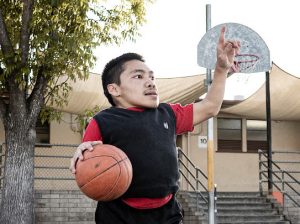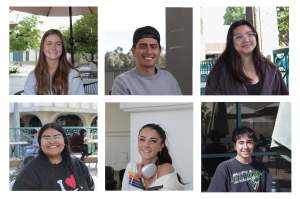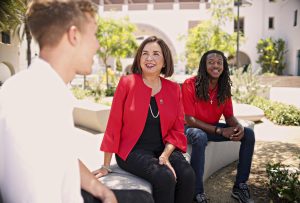Every year, thousands of students work on San Diego State’s campus—from the Aztec Recreation Center and the SDSU Bookstore, to several different departments and organizations. But at the beginning of each year, there are students left wondering where to start looking for a job and how to put their federal work-study funds to good use.
Though the name may be misleading, you don’t actually get to study while you work these jobs. The Federal Work-Study Program helps college students earn financial aid by working part-time. In order to receive a work-study award, students must file a Free Application for Federal Student Aid to qualify. In most cases, the institution or employer pays as much as 50 percent of the student’s wages, with the federal government covering the rest. Because of this arrangement, students can only work a maximum of 20 hours a week while classes are in session or 40 hours per week during vacation periods.
Some advantages of participating in the work-study program include keeping loans to a minimum, gaining work experience and skills related to your field of study, a flexible work schedule and earning financial aid every month.
For students who find navigating the dos and don’ts of work-study confusing, the SDSU Office of Financial Aid and Scholarships has many resources to help during the job hunt. Among the resources is an online job board, which lists the work-study eligible positions currently available on campus. SDSU Career Services also publishes a guide to student employment, which lists the different departments who hire students. In addition to
work-study, the department lists jobs available to students who do not have a work-study award.
Unlike employers at some off- campus jobs, employers through the university give more flexibility in balancing academics with work. Additionally, studies found working on-campus, as opposed to off-campus, enhances student involvement and integration in the university and increases persistence, which may make students more likely to graduate and continue their education.
Junior Daniel Montano worked off-campus during his first semester at SDSU, but has been working for the bookstore for two years. He said it is more convenient than working off-campus.
“You work here, you can go to the gym here, you can go to class here,” Montano said. “It has everything in one place.”
“Sometimes during midterms and finals it gets difficult,” Montano said. “But they’re pretty flexible if you let them know you need time to study and take time off.”
One piece of advice Montano said he gives to students seeking work on campus—work-study or not—is to apply early.
“I applied as soon as I saw the sign, got trained and got the job,” he said.
An important thing to keep in mind, however, is working while you’re in school is a balancing act. Many studies found working can negativelyimpactstudents’academic performances, but several also found employment has a neutral or even beneficial outcome for students. It’s all about time management. Time spent working takes away from time for socializing and studying. Plan your time accordingly, there is no reason working should not affect your grades.









